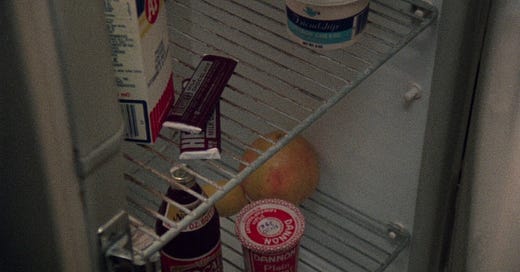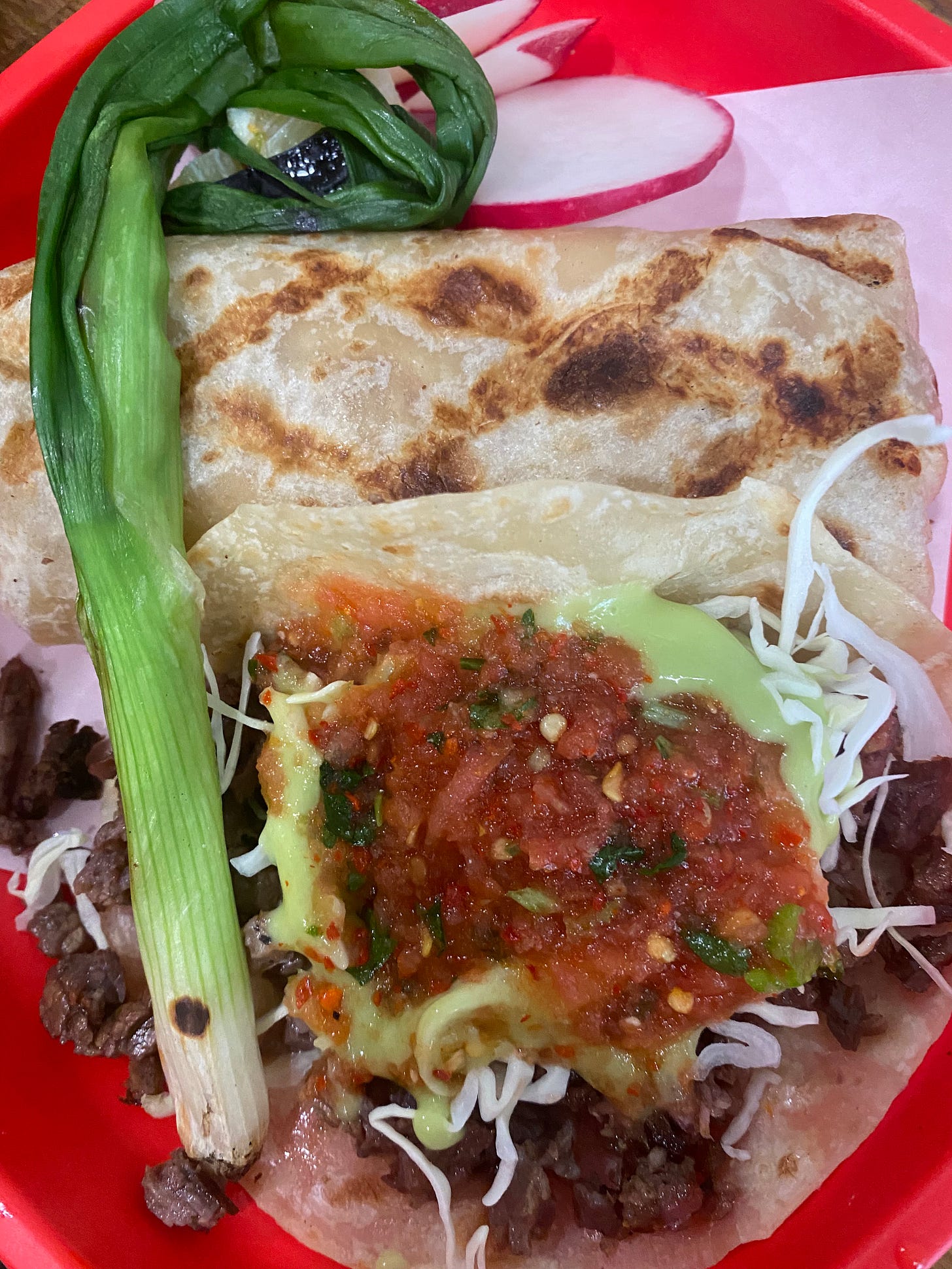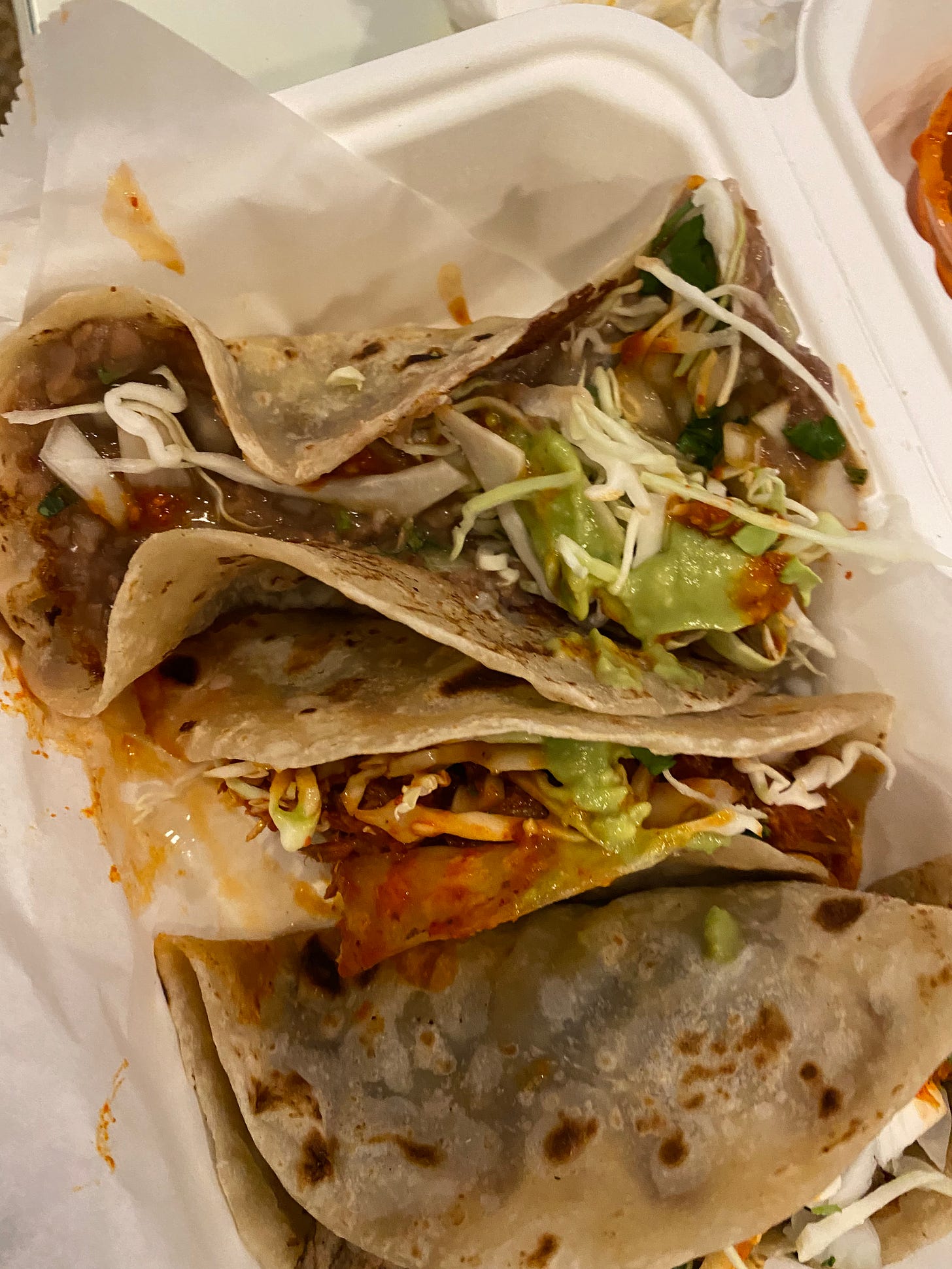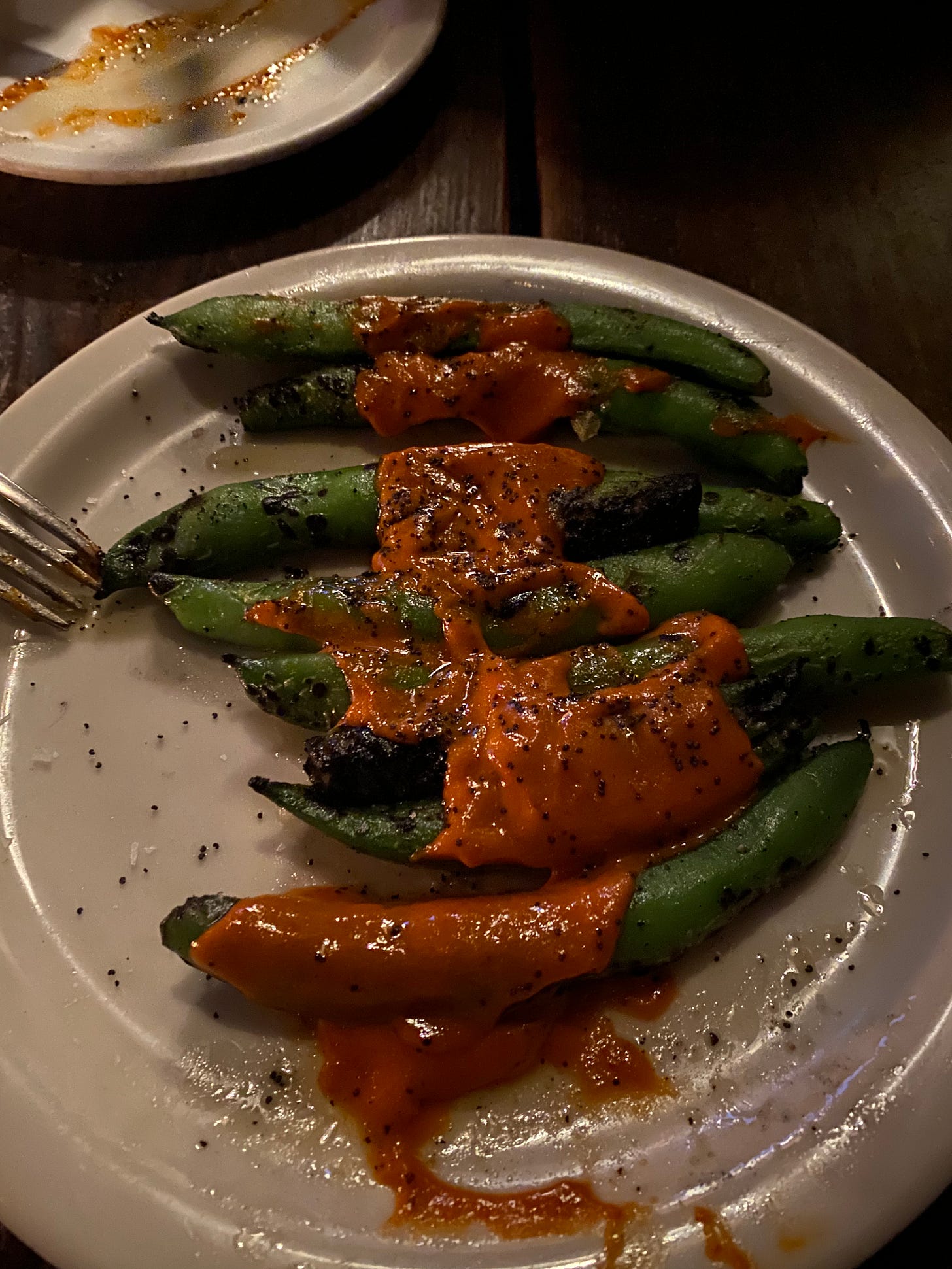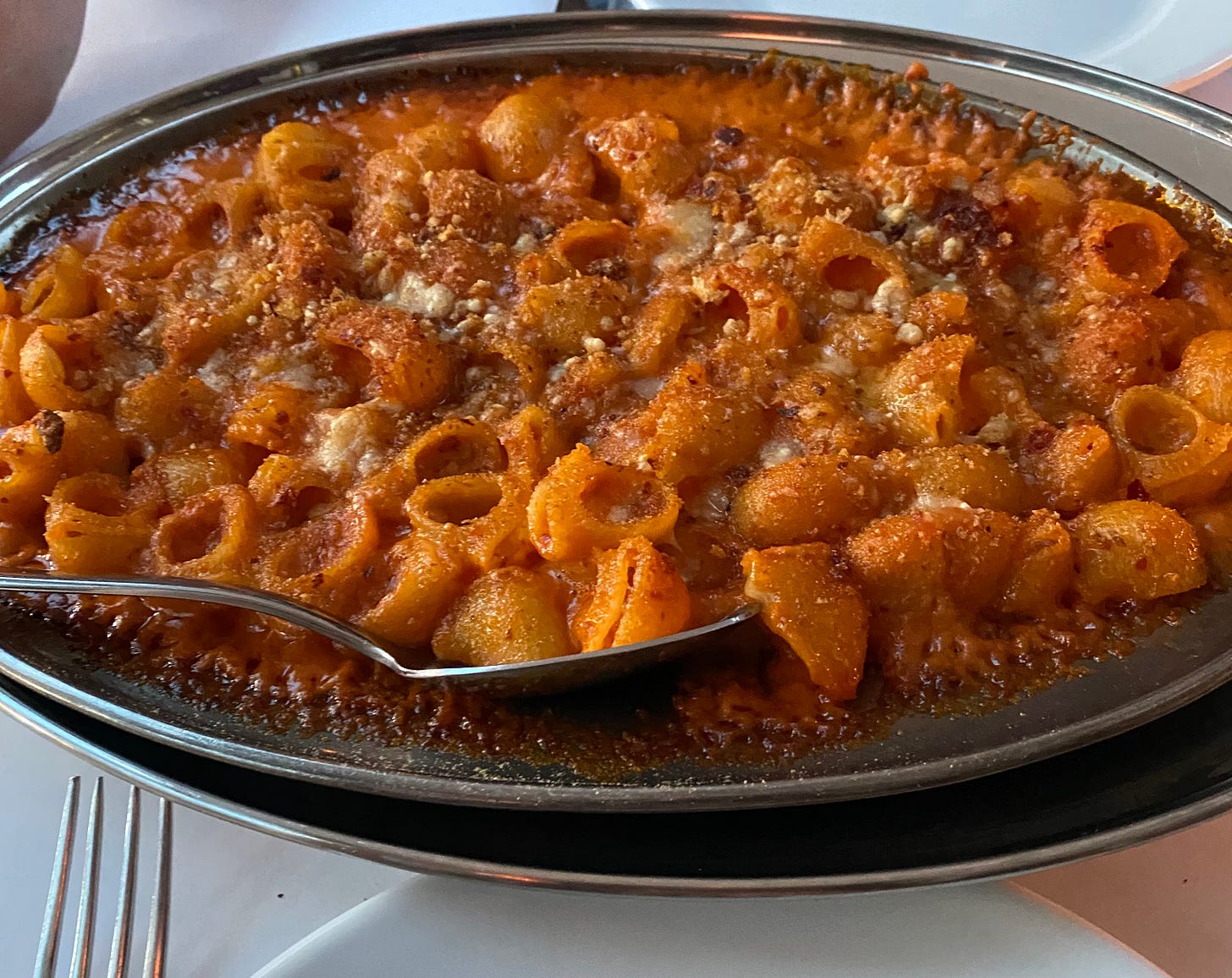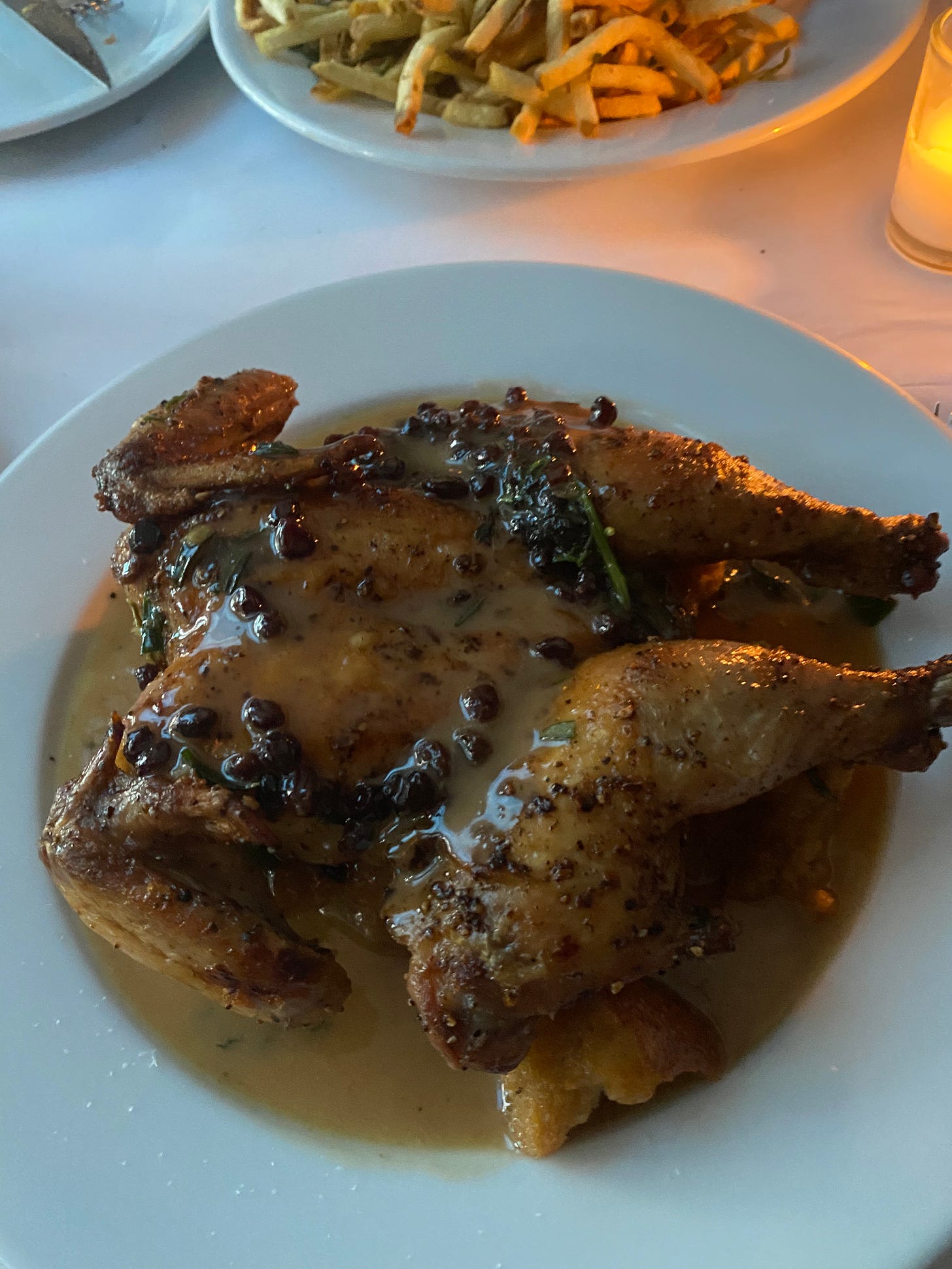I. Short takes: newish movies
II. Double feature: Drinking Buddies x Girlfriends
III. How to eat alone
III. Los Angeles bites
SHORT TAKES
Who knew that Angel Olsen or Kali Uchi ditties would perfectly underscore the rhythms of bovine life as they do in pure-cinema documentary COW by Andrea Arnold, who I interviewed here.
WE’RE ALL GOING TO THE WORLD’S FAIR is a gauzy horror movie replete with vibes that’s also an inherent portrait of gender dysphoria. I profiled director Jane Schoenbrun for Input.
David Lynch’s INLAND EMPIRE — newly restored and playing soon at a theater near you — is a MASTERPIECE worthy of the only rating I’ve ever given on Letterboxd. I’m currently reading Melissa Anderson’s monograph and luxuriating in her prose.
DRINKING BUDDIES
Joe Swanberg, 2013
There’s a scene in Worst Person in the World where two strangers, each of them in a relationship, meet-cute at a party and begin pushing the boundaries of infidelity by explicitly asking whether or not certain actions — smelling armpits, watching each other urinate — count as cheating. It’s all very endearing, but also a bit on the nose.
The characters in Drinking Buddies — which made Quentin Tarantino’s picks for best films of 2013 — tread similar territory without drawing attention to themselves. Some things are, after all, better left unsaid. Kate (Olivia Wilde) and Luke (Jake Johnson) are two Chicago brewery employees with an undeniable chemistry, a giggly rapport that agreeably threatens to bubble over into something less platonic.
Watching their unspoken attraction, as they cavort and carouse each other between calling distributors, lugging kegs, throwing darts, and downing shots, does something like stoke an acute nostalgia for harboring a secret crush, one predicated hypotheticals and not sinful lusting.
The plot thickens, if you want to call it that, when they take a double-date weekend trip to the countryside with their s.o.’s — played Anna Kendrick and Ron Livingston — where romantic tensions mingle and stakes rise an inch higher. Will they, or won’t they?
Swanberg, mumblecore’s most prolific king, maintains a sense of the workaday overseeing this largely improvised film, tied together by his waltzing camera. Drinking Buddies captures the irrefutable frisson of what’s unsaid, intertwined with the murk of human emotions, with surgical precision. The behavioral ambiance owes much to its stars: Stripped of traditional glamor, Wilde is paradoxically incandescent. In the casual vestments of the Midwestern normie, she exudes that non-actor naturalism essential to this American subgenre. Johnson, with his early sketch comedy roots, matches her every move, proving an apt scene partner. Kendrick on the other hand, still comes off like Kendrick, jangly nerves, opaque — still a star.
GIRLFRIENDS
Claudia Weill, 1978
Claudia Weill’s feature debut also concerns two friends falling in or out of love with each other, but in a much different way. Susan (Melanie Mayron), an aspiring photographer, and Anne (Anita Skinner), an aspiring poet, are best friends sharing an apartment in NYC. Without much notice, Anne gets hitched and moves out, leaving Susan to navigate her 20s on her own, a venture she gamely tackles with unruffled curiosity. Her views on marriage are summed up thusly: After catching the bridal bouquet at Anne’s wedding, she promptly forfeits it.
Susan bops around the West Side shooting bar and bah mitzvah portraits to make the rent while trying to procure a gallery show and doing all the things young people adrift in the NYC do. Her romantic pursuits include a congenial rabbi and a moppish guy played by a young Christopher Guest who’s neither unkind nor ideal, but serviceable for this moment in her life. When he visits her after losing his wallet, he carelessly snaps up her shrimp, which she’d just laid out on the table with some champagne. Meanwhile, Anne’s career plateaus from married life with young Bob Balaban.
The movie is so obviously a predecessor of Frances Ha that I'm crazy not to have seen it until now. In her honest depiction of female friendships, Weil exposes reticence encouragements, minor jealousies, and goes one further: What emerges is also a subtle portrait of conflicting desires — for career, for family, for the easy concretization of identity as wife, mother, and caretaker — with an enduring sense of immediacy.
A SYLLABUS
For the Syllabus Project, I created a collage of cinematic representations of women eating.
“Guided by associative logic… the images have enormous emotional range; they signify humor, solitude, peacefulness, pleasure, violence, yearning, and more. All of them seem to capture their subjects in moments of deep vulnerability. In the movies, food is an excellent way of commenting on characters’ wants and needs — and considering the ways that women’s wants and needs have been habitually policed, it’s all the more fascinating to meditate on these scenes and consider how we receive them.”
Thanks to Julia and Gillian for the commission and thoughtful description.
IT NEVER RAINS SOUTHERN CALIFORNIA
The poet Louise Gluck says that depressives hate the spring, so I skipped it, mostly, by heading to the West Coast. I haven’t been in a decade or so since school, which is when I first encountered Raffi’s, a Glendale staple. My Armenian roommate and her family took me there in my freshman year, and it changed my life. Those spices (saffron, dried lime, sumac, dill, etc.) used in that specific combination, were a matchless first for my tastebuds, as was the idea that ground chicken could ever be appealing. I would now gladly die for kubideh.
It was exactly as I remember, and my only disappointment came from the rice, limpid from excess steam. Maybe it had something to do with the fact that I ordered the baghali polo, the dill and fava bean (here replaced with limas) version, which is my favorite, when everyone else seemed to be getting the plain.
Similarly, the lule (minced meat) are the move at Mini Kabob. I went there immediately upon landing at LAX, an hour+ trip that was well worth it.
I have an arsenal of taco shops I frequent in New York, at-the-ready whenever anyone sneers or denies their existence. But now I must wholly surrender: The tacos in L.A. are transfixing, bloated, and cheap. They are superior, I concede, every measure. I would eat the leopard-spotted flour tortillas at El Ruso and Sonoratown without anything in them. Even the Tex-Mex, at HomeState, is spot on.
You probably couldn’t convince me to sit down for a pie in LA — even if you believe, as I do, that worthy competitors exist — because I’d rather save my appetite for other things, so I’m glad that Quarter Sheets operates as a popup by the slice. I had a plain Sicilian corner and another laden with pepperoncini, provolone, and red onion. Plus, they also dispense blocks of cake, also baked in a sheet pan as the name suggests, appeasing me and my partner our respective, cardinal hankerings.
The slice at Quarter Sheets had the same flavor profile as Nancy Silverton’s famous chopped salad at Pizzeria Mozza. I ordered two blissfully unaware that it’s portioned for sharing.
Before I went to Gjielina, I did not know you could eat the ENTIRE fava bean.
Tied first for the best meal I had on my trip were Summer Rolls in Temple City (credit goes to most discerning Los Angeleno Kat, for this and many other recs) which doesn’t even have its own website to showcase the fat summer rolls — stuffed with charbroiled pork and springy chicken thigh and a puffy, cigarette-sized shrimp egg roll— or everything at Horses on Sunset Boulevard. They’re at opposites on many accounts, like food, and style of service, but both encapsulate L.A.
(Not me ^^)
Horses has three distinct dining rooms ruled by different color schemes. The main dining room, with its exposed beams and burgundy booths, looks like something that an Albert Brooks character would frequent in the 70s; the windowless back room is painted Yves Klein blue; the side room, outfitted with lemon yellow booths and lime-colored chairs, has decidedly less panache. But I was grateful though, as we didn’t have a res; making one was as difficult as it for Bonnie’s, and I still had plenty of fun.
Our waitress, from Jersey, eagerly chatted us up and confirmed stereotypes about the eating habits of LA denizens: they only order salads, and they only finish half. At least that means no one would get mad at you for sharing an entree or try to upsell you on extra apps — not that anyone would ever need to. We ordered six dishes:
1. Panino sobrassada
2. Boudin basque with fried hen’s egg
3. Caesar salad
4. Cornish hen with dandelion panzanella
5. Burger and fries
6. Sheep’s milk cheese cake
The dainty pressed sandwich and the blood sausage would make for a winsome breakfast. When the caesar, made with endives instead of romaine, came out next, the unconscionable fear struck me that we’d ordered too much food.
At least we only ordered one pasta, though I wanted two. We settled on the off-menu one—red-sauced and nubbly with nduja—an unexpected yet undeniably correct combination. It was what the rigatoni alla vodka at Carbone, or anywhere else, wishes it was.
The trim Cornish hen arrives splayed a puddle of caramel-colored sauce, something beyond a roux and pan drippings. It was sticky and creamy in mystifying and delicious measure. Maybe it was the, at first, suspect addition of raisins (not even the mild, golden kind) that lent some magic. I believe it’s because these are dried Corinth raisins also known as zante currants.


